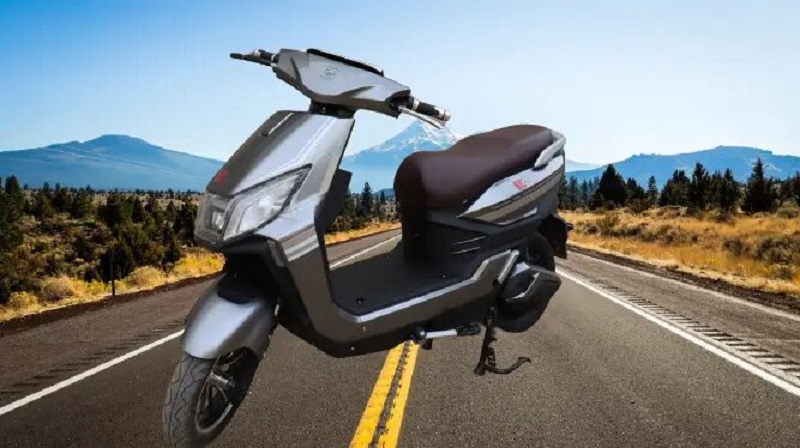
Electric two wheelers have gained very good popularity in India during the last few years. The electric two wheelers include two wheelers that use electricity instead of petrol or diesel. The growth is facilitated in India by different policies and programs offered by the government. Let us now look into how these policies influence the use of electric two wheelers in India.
Understanding Electric Two Wheelers
Electric two-wheelers are cars that run on electric batteries. Contrasting with the normal bikes that require fuel, electric two-wheelers use electricity to charge them. These decrease air pollution in the environment. Many people appreciate their use because they are cost-friendly to use and maintain. For instance, for using an electric two wheeler, one can spend as low as ₹0.50 per kilometer whereas in a petrol bike one uses ₹3-₹5 per kilometer.
Government Policies Supporting Electric Two Wheelers
The Indian government has initiated various regulations to encourage electric two-wheelers. These regulations are aimed at encouraging people to opt for electric bikes instead of regular bikes. Here are some of the major policies:
1. FAME India Scheme
The FAME India scheme was initiated in 2015 and provides finances to support people in the purchase of electric vehicles. The newly launched phase is FAME II, which looks to spend ₹10,000 crores within three years so that more people acquire electric vehicles.
Customers are eligible to get a subsidy of up to ₹15,000 on electric 2 wheeler vehicles. It means this money will encourage more people to choose electric vehicles.
2. State-Level Incentives
Many Indian states have their own incentives, in addition to national policies. States like Delhi, Maharashtra, and Tamil Nadu give extra subsidies to help people buy electric two-wheelers.
There is subsidy of up to ₹30,000 on electric two-wheelers, in case buyers prefer them in Delhi. That significant help makes electric bikes highly in demand among residents.
3. Charging Infrastructure Development
The government is constructing more charging stations within the country. In 2023, India already has over 2,000 public charging stations, and the government would like to increase that amount greatly. This helps address one of the largest concerns of people who might consider buying an electric two-wheeler: range anxiety.
With more charging stations, people can feel sure they can easily charge their vehicles. This will lead to more people using electric cars.
4. Tax Benefits
The Indian government provides tax benefits to manufacturers of electric vehicle. For an electric two-wheeler, the Goods and Services Tax (GST) has now been reduced to 5%. For a regular vehicle, it is 28%.
These tax benefits help manufacturers make more electric bikes, thus making more types of bikes available in the market. With more options, customers can easily pick a bike that fits their needs.
5. Campaigns Education/awareness
To promote electric two-wheelers, the government conducts awareness programs. They educate individuals about how electric vehicles can save running cost and how they benefit the environment.
This awareness level about electric vehicles has increased by over 40% in urban areas because of such campaigns, which is helpful to more people in making decisions.
Problems with Adoption
Government policies do help, but there are still some problems. Let’s look at a few of them.
1. High Starting Costs
Even with financial help, the first cost of electric scooters can be more than regular bikes. The average price of an electric scooter is about ₹1 lakh, while regular bikes start at around ₹70,000.
Many people in India have small pockets and cannot afford to pay even the reduced price. The government needs to work to bring down these costs also to make electric two wheelers available to all sections of people.
2. Few Models Available
Though the market of electric two-wheelers is growing, it still does not offer much variety of models compared to the traditional two-wheelers. At present, about 30 different models of electric two-wheelers are available. In contrast, over 100 models of traditional two-wheelers are available.
This can be solved by encouraging more manufacturers to enter the two-wheeler market.
3. Battery Life and Technology
Another issue is battery technology. Some electric bikes can go only 60 to 100 kilometers on one charge. In case the bike runs out of power fast, people may not be so likely to buy such a product.
The government can support research and development in battery technology to improve performance and reliability.
The Future of Electric Two-Wheelers in India
The policies of the Indian government are significant for making people use electric two-wheelers. Programs like FAME India, state incentives, and awareness campaigns facilitate the trend of using electric vehicles.
Conclusion
Indian government policies are important for getting people to use electric two wheelers. The government supports this through programs like FAME India, state incentives, and awareness campaigns to encourage people to choose electric vehicles.
Though the problems persist, help from the government and the growing awareness among people will certainly promote the electric two-wheeler market. Going forward, electric two wheeler motorcycle are sure to appear on Indian roads more often than before, paving the way for a cleaner environment and sustainable transportation.
For more interesting articles or blogs post, then visit: Guest Post City